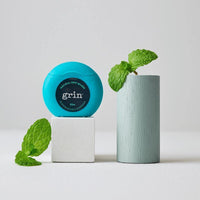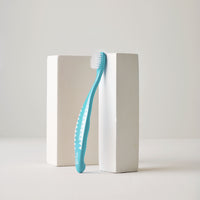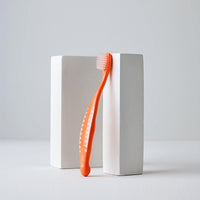Importance of Flossing and How
While brushing is extremely important, flossing is often overlooked. The fact is, there are simply places that your toothbrush cannot go! By adding that extra step of flossing, you can reduce tooth decay and gum disease by eliminating plaque from in between your teeth. In other words, flossing helps prevents cavities and gingivitis (or worse, periodontitis).
How do you floss?
Gently slide the floss between your teeth, making sure not to push too hard and lacerate your gums. Glide the floss up and down, scrubbing it against both sides of each tooth. Curve the floss at the base of the tooth to form a C shape, and rub it gently a few times on each side of the tooth. You can use traditional floss, or even a “flosser”, such as Grin Natural Biodegradable Flossers, or floss aid. The Water Pick has become popular, but does not have the same effects of actual floss.

But why do you have to floss?
The enamel of your teeth are at risk of erosion by microorganisms, resulting in cavities. Flossing removes this dangerous plaque and prevent germs from growing on your teeth. If you floss on a regular basis, you reduce your chances of cavities and gingival swelling or redness. Plaque and food debris is easily missed in a mirror gets scrubbed off by floss, resulting in a whiter, healthier smile.
- Reduces bad breath
Halitosis, or chronically bad breath, is a frequent ailment caused by the bacteria that grows on your teeth and gums. When food is stuck sandwiched between your teeth, it feeds that bacteria, allowing it to reproduce and spread. You may have bad breath if you don't clear the food particles from your mouth.
- Reduces the risk of cavities
For healthy teeth and gums, flossing is essential. Flossing removes plaque from between teeth, which may help prevent cavities and gum problems from developing. Only three of the five sides of your teeth can be adequately cleaned by your brush (the top, front, and back). However, the spaces in between, where your teeth touch, still need to be cleaned.

- Helps prevent gum disease
Gingivitis is the earliest stage of gum disease, but is still reversable. Inflammation and bleeding of the gums is one of the initial symptoms of gingivitis. If the disease progresses without treatment, it is called periodontitis, an infection of the jaw bone, and it is not reversable. As a result, you may see your gums receding or pulling away from your teeth. Teeth eventually become loose and may fall out due to the lack of bone support. Peridontitis, if left untreated, sets off an inflammatory reaction that spreads throughout the body. The chance of developing gum disease may be reduced by brushing and flossing twice a day.
- Protects from other diseases
An unhealthy mouth harbours germs that, if left untreated, may cause damage to the rest of your body. Gum disease, heart disease, diabetes, and lung problems may all be the result of gingivitis travelling through the bloodstream.
- Good for your overall health
It's understandable that cleaning your teeth after every meal isn't always an option, but flossing is quick and portable. Dentists advise patients to floss once per day, ideally after brushing their teeth in the evenings to clear any food particles or plaque that may have accumulated throughout the day. While it may take a few minutes from your day, flossing has a significant impact on your oral and overall well-being.

About the Author: Leah Sigler, RDH
Leah Sigler has been in dentistry all her life, as her parents are dentists. After graduating college, she lived in Guatemala for two years working as a Peace Corps Volunteer, teaching health education. She graduated dental hygiene school and worked clinical dentistry for five years. Leah joined The TeleDentists as Director of Operations, and has recently taken the position of President. She enjoys working virtually with her two small children, based out of Lenexa, Kansas.
Illustration credit to our incredible @sll.stories



























